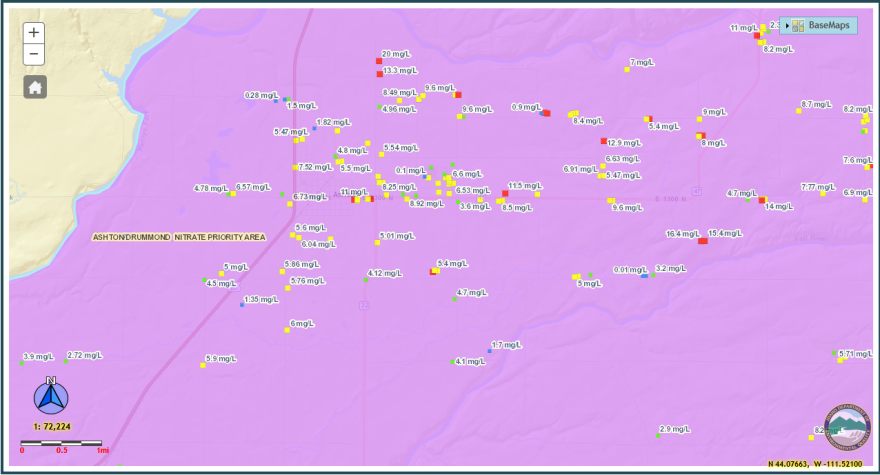"Nitrate" may as well be a four-letter word in the small town of Ashton, Idaho.
The eastern Idaho town of 1,200 people is about 20 miles from the border of Wyoming. Settlers in the area in the 1890s quickly took advantage the fertile volcanic soil beneath their feet, and began diverting water to irrigate the land. Seed potatoes are the big cash crop, though wheat, barley and hay also contribute to the local economy.
But the same farms that help keep the town afloat could also have been the source of nitrate contamination in the city's well water. (Nitrate, as we reported earlier this week, is a compound that's difficult to get rid of once it gets into wells. Rural farming towns in Idaho are most susceptible to the contaminant.) One of the main sources of nitrate is fertilizer, which -- if not applied correctly -- can sink through the soil and into the well or aquifer below. The Department of Environmental Quality (DEQ) monitors nitrate levels, mapping private wells around the state. Several years ago the agency told Ashton officials they needed to do something about elevated nitrates in the city's two wells.
Ashton Mayor Teddy Stronks says building a $5 million water treatment plant in 2012 to manage the nitrate levels was a bitter pill to swallow. He says many Ashton residents are retired or on a fixed income.
“It’s pretty hard for a little community this size to do these kind of things," says Stronks, "because every time we do, it raises our rates and we have to borrow money to pay for the project.”
The base water rate for households in Ashton is about $40 a month as the town slowly pays off the treatment plant bill. But Stronks says once residents understood the health risks to babies and pregnant women, they supported the water treatment plant.
Stronks says the DEQ never said exactly what caused the elevated nitrate levels, but that fertilizer could be partly to blame. According to a 2014 article from East Idaho News, the Natural Resources Conservation Service worked with farmers to address potential nitrate problems head-on.
DEQ Ground Water Program Manager Ed Hagan says Ashton is the only town in Idaho he knows of that treats drinking water to remove nitrate.
Find Frankie Barnhill on Twitter @FABarnhill
Copyright 2016 Boise State Public Radio




